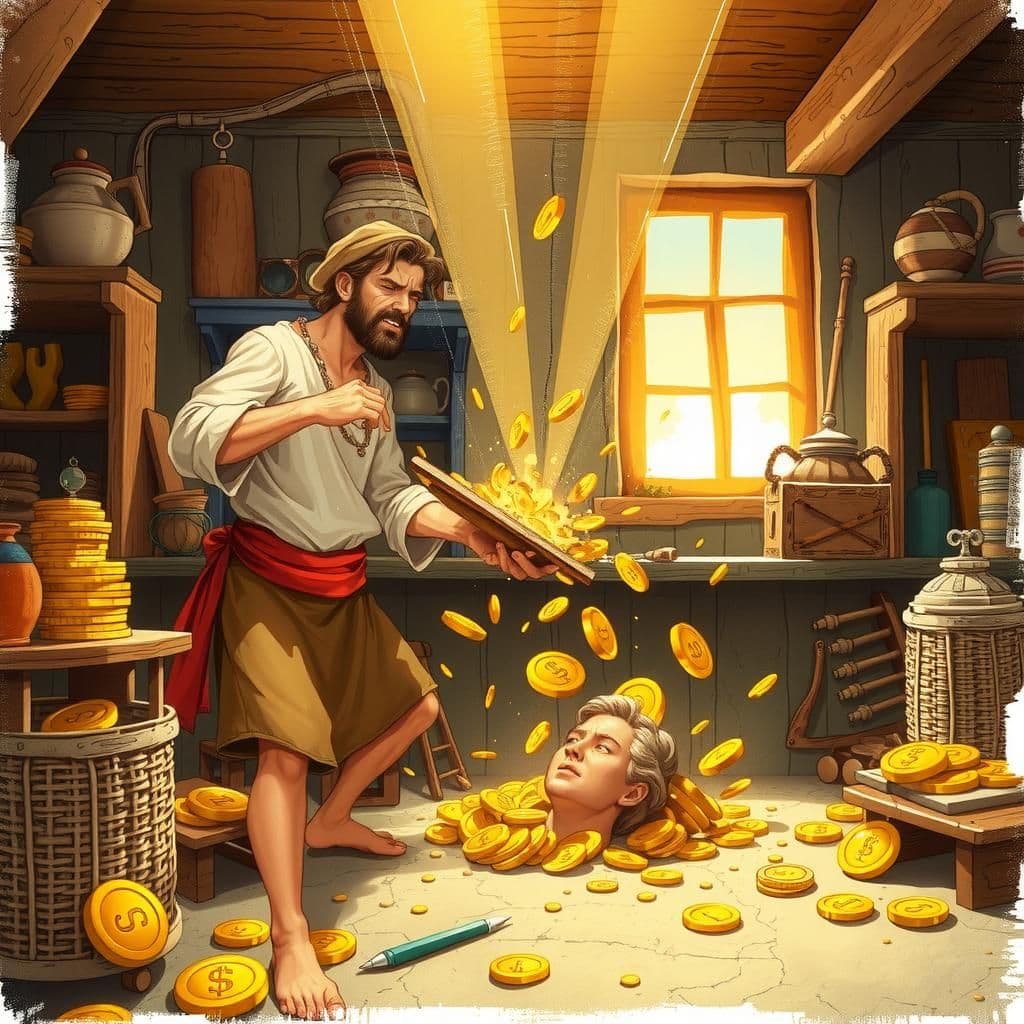The Crow and Mercury
In the fable "The Crow and Mercury," a crow, ensnared and desperate, prays to Apollo for rescue, promising to offer frankincense at his shrine, but forgets his vow once freed. Caught again, he makes a similar promise to Mercury, who scolds him for betraying Apollo and questioning his loyalty. This short story with moral illustrates the consequences of failing to honor one's commitments, a theme found in many well-known moral stories.

Reveal Moral
"The moral of the story is that one should honor their commitments and loyalty, as betraying trust can lead to a loss of credibility and support."
You May Also Like

The Wolves and the Sheepdogs
In "The Wolves and the Sheepdogs," a famous fable with moral lessons for kids, the Wolves entice the Sheepdogs with promises of freedom and shared feasting on sheep, leading them to betray their human masters. However, this quick read story with moral consequences takes a dark turn when the Sheepdogs, lured by temptation, are ambushed and killed by the Wolves. The tale serves as a cautionary reminder of the dangers of betrayal and the harsh realities that can arise from succumbing to temptation.

The Image of Mercury and the Carpenter
In this captivating moral story, a poor carpenter worships a wooden image of Mercury, seeking wealth but only facing increasing poverty. In frustration, he destroys the idol, which unexpectedly releases a stream of gold, revealing the ironic lesson that sometimes life-changing stories with moral insights emerge from unexpected actions. This concise moral story underscores the idea that mistreatment can lead to rewards, providing a thought-provoking lesson about the nature of value and respect.

The Shadow of the Leader
In "The Shadow of the Leader," a political leader is taken aback when his shadow unexpectedly detaches and races away. When he calls it back, the shadow cleverly retorts that if it were truly a scoundrel, it wouldn't have abandoned him, cleverly reflecting on the leader's own questionable character. This funny story with moral echoes themes found in popular moral stories, reminding us that our actions often reveal our true selves.
Quick Facts
- Age Group
- adultkidschildrenstory for class 2story for class 3story for class 4story for class 5story for class 6story for class 7story for class 8
- Theme
- betrayalaccountabilitythe consequences of promises
- Characters
- CrowApolloMercury
Subscribe to Daily Stories
Get a new moral story in your inbox every day.